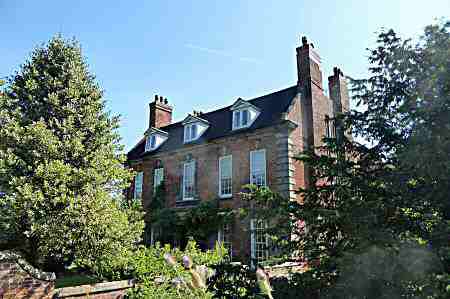A to Z HIGHLIGHTS OF EAST STAFFORDSHIRE - PART 7

STAPENHILL
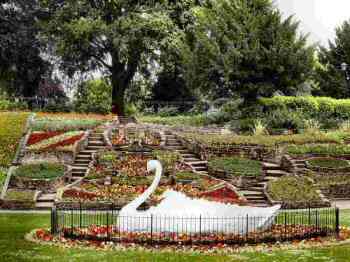
Stapenhill is located on what was the Derbyshire side of the River Trent. It is a large ancient parish that has been gradually surrounded by new housing developments. In 2003 it lost some space when the new parish of Brizlincote was formed. The banks of the River Trent are highly valued by the local community and visitors alike and contribute significantly to the conservation area. They offer opportunities for recreational pursuits, including walking, cycling and fishing. It is also a valuable wildlife habitat. A popular attraction for many people is the large number of swans that swim gracefully along the river close to Stapenhill Remembrance Gardens, attracted by the good feeding conditions both natural and human. The gigantic model swan in the pleasure gardens is a picture in the summer when planted with flowers. And together with the newly refurbished Ferry Bridge attracts the most attention.
St Peter’s Church commonly known locally as Stapenhill Church occupies one of the earliest sites of worship in Burton. It may have foundations that preceded the Norman Conquest and could have had minister status in the late 11th century.
Since 1841, the Washlands have been used for public recreation and boast an abundance of flora, fauna and wildlife along the pretty riverbank walks.
STAPENHILL– FERRY BRIDGE
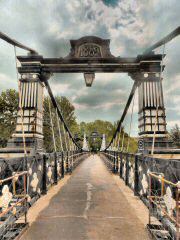
The Ferry Bridge was opened in 1889 to replace the ferry originally used for pedestrians to cross the River Trent. Shortly afterwards the raised walkway was completed, which made it very straightforward to reach the other side of the Washlands. Rather than have to struggle across the marshland which might be impossible to cross after a prolonged period of heavy rainfall had caused flooding.
STAPENHILL- GARDENS
Stapenhill Gardens is a popular local park with formal gardens, open grassland, woodland and a popular play area. The site was gifted to Burton Corporation in 1933 by Henry Goodger, a local solicitor, as a pleasure ground in memory of his mother. Part of the ground was lost with the construction of the access road for St Peter’s Bridge. The focal point is the gigantic model swan planted with flowers. It was built in 1953, coronation year, by members of the old Burton Corporation Parks Department. The construction alludes to the swans that inhabit the gardens and river at this point. At the rear is St Peter’s Church which may have had minster status during the Anglo-Saxon period.
STANTON
Stanton is a small rural village situated at the eastern end of the Weaver Hills, in dry stone wall country. During the 19th century, stone was quarried on a large scale. Ilam Hall was built largely of sandstone quarried in Stanton and most of the farmhouses and cottages in the area. Near the Weaver Hills, the stone turns to limestone, which is used to build walls on the surrounding hills.
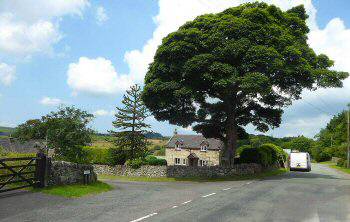
Similar to many other small villages Stanton has lost most of its facilities, but the old school remains now converted into the village hall, called the Gilbert Sheldon Hall. Stanton was the birthplace of Gilbert Sheldon. He was the Archbishop of Canterbury between 1663 and 1677. Sheldon was also the chaplain to King Charles I during the English Civil War. The house where he was born remains in the centre of the village. He founded the Theatre at Oxford, the Sheldonian Theatre.
Stanton is mentioned in the Domesday Book and evidence of human activity in the area goes back much further with three Bronze Age barrows having been discovered on the hilltop at Thorswood. In 1953 a gold bracelet was found in the parish dated circa 800 BC and is now housed in the Potteries Museum and Art Gallery. Thorswood Nature Reserve has been set up by Staffordshire Wildlife Trust near Stanton. It comprises 150 acres of flower-rich unimproved pastures, upland heath and meadows. Visitors to the reserve are advised to keep to the marked trails where indicated, to avoid mineshafts.
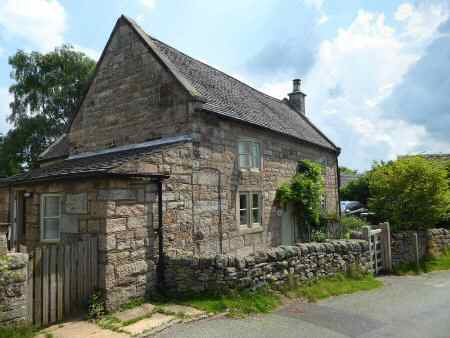
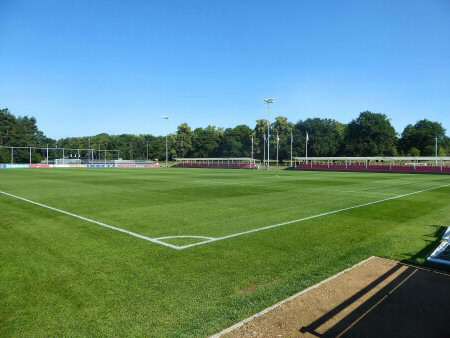
ST GEORGE’S PARK
The site of St George’s Park stands on what were once the hunting grounds of Needwood Forest, developed by the Berkeley family in the 13th century. Today, 330 acres of the former Byrkley Lodge estate has been acquired by the Football Association and transformed into the St George’s Park National Football Centre.
Opened in 2012 by the Duke and Duchess of Cambridge, the centre is the base for all coaching and development work undertaken by the FA, and the training and preparation ground for all of the England national football teams. There are 13 outdoor pitches, including one with a replica of the Wembley surface, and extensive world-class sport-related indoor facilities. Two Hilton hotels are located at the venue.
STRETTON
The River Dove forms the boundary between Staffordshire and Derbyshire and the northern border of the ancient village of Stretton. Originally, it was a small village about two miles north of Burton town centre. However, a rapid expansion in the population during the second half of the 20th century was followed by extensive housing development. Today, it is a pleasant largely residential suburb of Burton, but it still retains several open spaces.
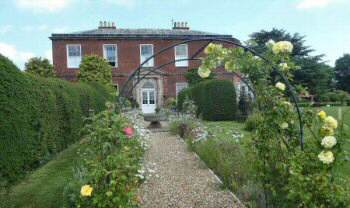
At the northern end of the parish, it is interesting to note that there was a bridge carrying the Derby Road over the river Dove between Staffordshire and Derbyshire by at least the early 13th century when it was called Egginton Bridge. It later became known as Monk’s Bridge when the Crown granted permission for a chaplain to collect alms for its repair. The chaplain built himself a chapel on the bridge, and in 1398, a chantry was established there dedicated to St. Anne. The bridge remains by the A38 as an important historical asset. Dovecliff Hall, a Grade II listed building is an exquisite Georgian residence that sits in the northwest corner of the parish. It was built in the 1790s on a 40-acre site next to the River Dove, for Thomas Thornewill, a forge-owner from Stretton. Subsequently, the house passed through various hands including the Bass family the well-known brewers. It was converted to a hotel in 1987 and is now back in business under new ownership, after going into administration a few years ago.
St Mary’s Church is also a listed building which replaced an earlier one. It was re-built between 1895 and 1897 and paid for by John Gretton a proprietor of Bass, Ratcliffe and Gretton, brewers. The church was designed by architects John Thomas Micklethwaite and Somers Clarke. The former served as surveyor of the fabric of Westminster Abbey, and is buried in the West Cloister; the latter was the surveyor of the fabric of St Paul’s Cathedral from 1897 to 1906.
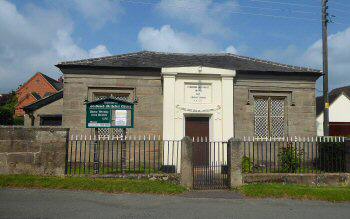
STUBWOOD
Stubwood is a peaceful hamlet near the southern edge of Denstone with houses on either side of the lane. The main point of interest is Stubwood Primitive Methodist Chapel, which was built of Hollington Stone in 1841 and is a listed building. The external view of the chapel has changed little over the years. It still holds regular services.
TATENHILL
The ancient village of Tatenhill has grown over the years, along a winding main street, with attractive old houses on either side of the road an eye-catching public house and a historic church. It has been awarded conservation area status and has several Grade II and Grade II* buildings listed. St Michael and All Angels’ Church dates back to the 13th century and has been substantially restored. The interior was mostly refurbished during the Victorian era with new pews, tiled floors and beautiful stained glass memorial windows dedicated to local people. Beside the church stands the Old Rectory, built in the early 18th century and is noted for its fine Georgian architecture. In 2008, it was nominated as one of four finalists in the ‘England’s Finest Parsonage’ contest featured in the Country Life Magazine.
The National Forest Adventure Farm on Postern Road is proving a popular attraction. It is open all year. Here you can meet farm animals and enjoy numerous daily activities. There is a 3,000sqm indoor play barn on site. In the summer, you can enjoy a huge 10-acre maize maze with its 3 miles of pathways, bridges and viewing towers.
A short distance from the village is the home of Tatenhill Aviation Limited, an old Second World War airfield, which is still in use for light aircraft. Apart from aircraft maintenance, flying lessons are available to the general public and flying experience vouchers can be purchased. The Midlands Air Ambulance charity operates one of its three helicopters from the airfield.

